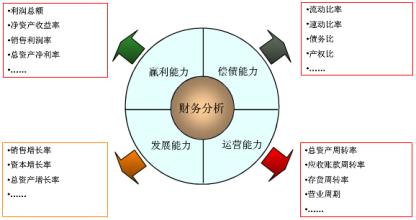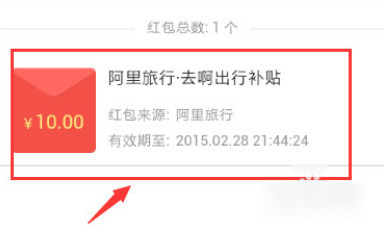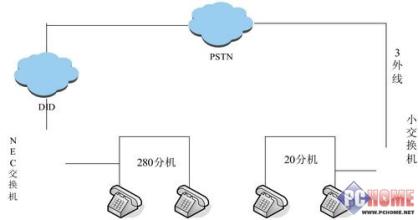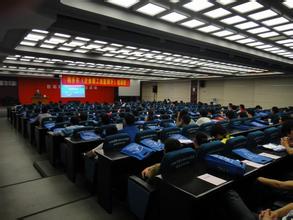Ten Ways to Use Enterprise Solutions to Achieve Higher Performance LevelsBy Mark R. WillfordAccenture
In many organizations, enterprise systems have an impact on the performance of practically every single employee--whether in the front office, the back office, the warehouse or dealing with customers. So it is no wonder that enterprise systems can have a significant impact on an organization’s ability to achieve higher levels of performance.
Initial Accenture research has identified key characteristics that differentiate high-performance organizations. These include focusing on core competencies and using information technology as a tool to innovate, creating more effective business models, while simultaneously increasing productivity. In addition, high-performance businesses and governments take a pragmatic approach to technology adoption and integration. They also consolidate and standardize information technology to manage the total cost of ownership.
Enterprise solutions can play a key role in helping organizations develop these traits. Indeed, while enterprise solutions that enable a common source of data, integrated systems, timely information and standardized processes all contribute to achieving higher performance, they are not valuable in and of themselves. That conclusion is validated by an Accenture survey of 163 organizations worldwide that showed that only 41 percent of organizations have achieved the majority of targeted benefits from their enterprise systems.
To help organizations better use enterprise solutions to achieve higher levels of performance, Accenture has developed the following 10 guidelines:
1. View enterprise systems as an ongoing program to improve performance and drive value.
Accenture views enterprise solutions and the benefits they deliver along an evolutionary continuum (see Figure 1 below). Most organizations find themselves stagnating between process integration and collaboration. High-performance businesses aspire to continue to push their enterprise system capabilities. They approach enterprise systems as more than discrete projects with start and stop dates but rather as enablers of value and as part of an evolutionary program that always seeks new ways to add value.2. Accelerate value creation by targeting tangible business benefits.
Accenture research shows that 34 percent of organizations either do not have a business case that identifies specific benefits when they implement enterprise solutions or they do not actively measure benefits. What is more, the 31 percent of organization that actively track metrics for the majority or all of the expected benefits reported that they achieved benefits significantly earlier than those that did not actively measure benefits.3. Optimize your enterprise architecture to deliver value.
The three components of enterprise architecture--process, technology and data--must work together to deliver value. Accenture’s experience demonstrates that those organizations with the best enterprise solution performance deliver the all-important enabling technology solutions such as application servers, portals and integration brokers, on a common platform with common development and operations frameworks. By reducing the number of disparate technology platforms you also reduce related maintenance and skilled resource costs.4. Customize enterprise system applications to gain competitive advantage--and for no other reason.
Enterprise systems should be customized only when they can be directly linked to a tangible business benefit. Define, early in the process, those business processes that are unique to the business in terms of driving differentiated business capabilities for competitive advantage. For most organizations, only 15 percent to 20 percent of processes qualify for customization. Even then, there should be a structured business case submission and approval process. For routine, non-strategic processes, standardized applications should suffice.5. Adopt a business readiness program to not only manage change but actively embrace it.
Active ownership and accountability are critical to making sure an organization is ready for the changes that accompany a new enterprise system or functionality. Apart from active participation and sponsorship, a fully integrated stakeholder structure responsible for driving business value and readying the business--and possibly customers and suppliers as well--for change is crucial. This stakeholder network will define the business metrics, help proactively manage business readiness throughout the organization and be accountable to deliver the new system’s benefits as described in the business case.6. Understand your core competencies and evaluate outsourcing options.
In addition to outsourcing technical infrastructure and platforms, Accenture believes organizations should consider applications management and business process outsourcing. In most cases, when organizations consider business process outsourcing, it is the result of a strategic decision to focus the organization’s resources and management attention on core competencies. For example, when product development is a company’s lifeblood, consider outsourcing the finance and accounting functions. Additionally, outsourcing and the use of global resources can lower the total cost of ownership and reduce risk.7. Use a real-time snapshot of enterprise performance to make the right decisions.
According to Accenture research, improved decision-making is the number one benefit sought by organizations when they implement enterprise solutions, yet only 63 percent achieve desired levels of improved performance. Our experience shows that accurate, consistent and complete real-time information must be the starting point, not the destination. The good news is that new sources of data--combined with cheaper data storage and faster processing power and more effective data analysis--will enable organizations to gain actionable insights in real time.8. Maximize the value of your supply chain.
The supply chain is an area of significant opportunity for achieving high performance. Top organizations incorporate the supply chain into their business strategy and devote significant attention to extracting the value. These organizations use mutually beneficial enterprise solutions to collaborate with their suppliers--and customers--to drive innovation.9. Use customer insight to expand your customer base and secure customer loyalty.
Too often, enterprise solutions are technically sound, but fail to deliver benefits from the customer’s perspective. Be more than a supplier. Use customer insight, for instance, to proactively offer products and services and create a stronger bond with customers.10. Assess and adopt new technologies that can empower the organization.
Not every organization should be on the “bleeding edge” of new technologies. But every organization interested in achieving higher levels of performance should have a process in place to assess new technologies to become early adopters or fast followers as appropriate.Examples of newer technologies include radio frequency identification tags for tracking at the inpidual item level, mobile solutions to provide field teams with immediate access to information and interactive messaging, which can enable natural language interaction and transactions with your enterprise system across interactive channels such as instant messengers, pagers and short messaging service cell phones.
However an organization approaches improving its performance, enterprise solutions will almost certainly be involved--and whatever approach you take with enterprise solutions, you will need to be proactive about managing risk. These 10 guidelines provide a way to review current and future enterprise solutions from the perspective of achieving high performance.
Additional Information:

This Outlook Point of View references results found in the Accenture Institute for High Performance Business’ “The Return of Enterprise Solutions: The Director’s Cut” study by Thomas H. Davenport, Jeanne G. Harris and Susan Cantrell.
Mark R. Willford, partner-Accenture Global Business Solutions.
This article originally appeared as an Outlook Point of View, an Accenture publication. Copyright 2004 Accenture. All rights reserved. Reprinted by permission.
 爱华网
爱华网


